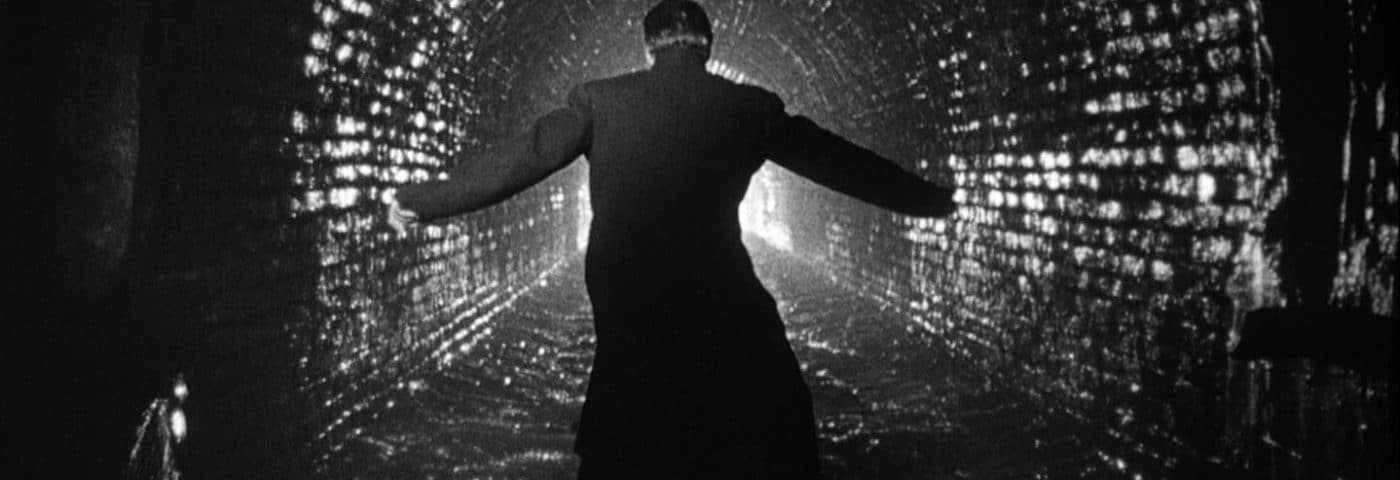We talk about the great directors, yet it’s always a group effort. It takes a strong director to steer the many divergent elements in the same direction. When the process works, all the elements fit together so the result is equal to more than the sum of the parts. The Third Man (1949) is a film where everything meshes — the script, acting, camera placement, lighting, music. It’s probably the best British film made after World War II, as well as the best film noir made in Europe.
Because each of the elements is so exceptional, director Carol Reed is rarely given the credit that’s due. He pushed to have the zither music in the movie. He also argued for the final shot being held much longer than writer Graham Greene or producer David O. Selznick thought appropriate. Selznick wanted to use studio interiors for the production, but Reed preferred the actual war-torn streets of Vienna as a backdrop. The camera and lighting compositions with their odd angles and surreal effects contribute significantly to the atmosphere of the story. The overall look combines the moody darkness of a film noir with the starkness of a you-are-there documentary.
Graham Greene’s script was developed specifically for this project. He also wrote it as a short story, but only to work out the ideas. In his book Ways of Escape, Greene explained, “The reader will notice many differences between the story and the film, and he should not imagine these changes were forced on an unwilling author: as likely as not they were suggested by the author. The film in fact is better than the story because it is in this case the finished state of the story.”
As good as Greene’s script is, the most famous lines from the film were written by Orson Welles. Onscreen for a comparatively short time, Welles’ performance as Harry Lime stands out as one of his best roles. Here are two nuggets from Welles’ self-penned dialogue, where Lime explains to Rollo Martins (played by Joseph Cotten) that it’s a dog-eat-dog world:
Martins: Have you ever seen any of your victims?
Lime: You know, I never feel comfortable on these sort of things. Victims? Don’t be melodramatic. Tell me. Would you really feel any pity if one of those dots stopped moving forever? If I offered you twenty thousand pounds for every dot that stopped, would you really, old man, tell me to keep my money, or would you calculate how many dots you could afford to spare? Free of income tax, old man. Free of income tax — the only way you can save money nowadays.Lime: Don’t be so gloomy. After all it’s not that awful. Like the fella says, in Italy for 30 years under the Borgias they had warfare, terror, murder, and bloodshed, but they produced Michelangelo, Leonardo da Vinci, and the Renaissance. In Switzerland they had brotherly love — they had 500 years of democracy and peace, and what did that produce? The cuckoo clock.
Avoid the poor quality prints that were struck when the film temporarily lapsed into the public domain. The DVD from Criterion is the best way to see it — other than in a movie theater, of course. I haven’t seen the print that TCM shows occasionally, though that network is usually conscientious in trying to obtain the best available print.
The Third Man
(1949; directed by Carol Reed)
The Criterion Collection (Blu-ray and DVD, out of print)
Lions Gate — StudioCanal Collection (Blu-ray)
Saturday, May 9 at 12:00 p.m. eastern on Turner Classic Movies
I first posted this article here at my Classic Film Review website.

